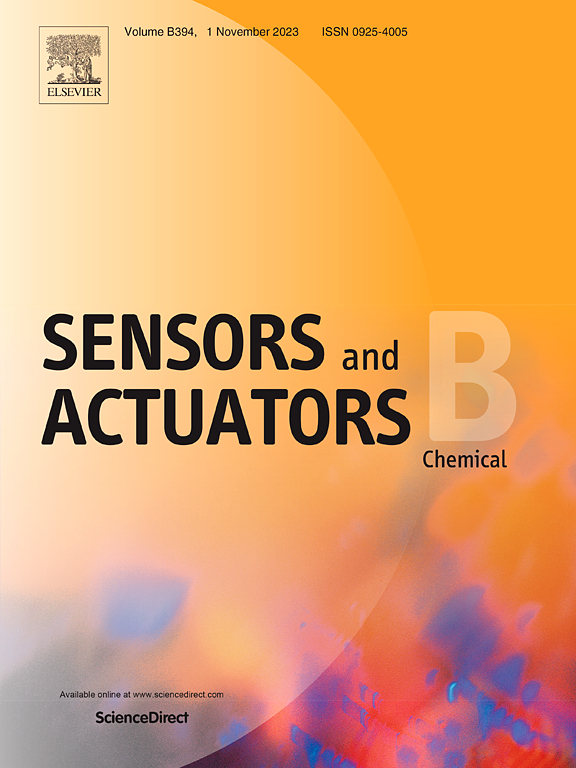使用丝网印刷石墨电极和德拉根多夫试剂在法医分析中选择性鉴定和定量东莨菪碱的新型比色-电化学方法
IF 8
1区 化学
Q1 CHEMISTRY, ANALYTICAL
引用次数: 0
摘要
在法医调查中,东莨菪碱(俗称“布伦丹加”或“魔鬼的呼吸”)的检测具有重大意义,因为它可能与谋杀或自杀未遂案件有关。目前,在这种法医环境下,没有有效的东莨菪碱检测筛查方法。本研究提出了一种结合方波伏安法(电化学步骤)和Dragendorff试剂(比色步骤)的新型方法,用于检测饮料(杜松子酒、汤力水、威士忌和能量饮料)和生物样品(尿液、唾液和玻璃体)中的东莨菪碱。该方法提供了两种不同的分析响应:通过比色反应的可见颜色变化(从橙色到黄色),以及东莨菪碱在阳极和阴极扫描中的电化学行为,确保了可靠和准确的鉴定。首次研究了东莨菪碱两个氧化还原过程的电化学行为。该方法具有很宽的线性范围(氧化过程为0.025 ~ 0.225 mg mL - 1,还原过程为0.025 ~ 0.175 mg mL - 1),低检测限为5.0 μg mL - 1,适用于法医应用。用SPGE研究了电化学响应的稳定性,发现Ep和Ip在多个电极(N = 3)上的相对标准偏差(RSD)小于3%。干扰研究证实了该方法对东莨菪碱检测的高选择性。此外,东莨菪碱在饮料和生物样品中均被成功鉴定,回收率接近100%,表明不存在基质效应。电化学与比色相结合的方法为法医场景中东莨菪碱的检测提供了一种有前途的、快速的、选择性的筛选方法。本文章由计算机程序翻译,如有差异,请以英文原文为准。
Novel colorimetric-electrochemical methods for selective identification and quantification of Scopolamine in forensic analysis using screen-printed graphite electrodes and Dragendorff reagent
In forensic investigations, the detection of Scopolamine, popularly known as Burundanga or Devil’s Breath, is of significant interest due to its potential involvement in cases of attempted murder or suicide. Currently, no efficient screening methods exist for Scopolamine detection in such forensic contexts. This study presents a novel method combining screen-printed graphite electrodes (SPGE) with square-wave voltammetry (electrochemical step) and Dragendorff reagent (colorimetric step) to detect Scopolamine in drinks (gin, tonic water, whisky, and energy drinks) and biological samples (urine, saliva, and vitreous humor). The method provides two distinct analytical responses: a visible color change (from orange to yellow) via the colorimetric reaction, and the electrochemical behavior of Scopolamine in both anodic and cathodic scans, ensuring robust and accurate identification. For the first time, the electrochemical behavior of both redox processes of Scopolamine is investigated. The proposed method demonstrated a wide linear range (0.025-0.225 mg mL−1 for the oxidation and 0.025–0.175 mg mL⁻¹ for the reduction process) with a low limit of detection of 5.0 μg mL−1, making it suitable for forensic applications. Stability of the electrochemical response was studied with SPGE showing relative standard deviations (RSD) of less than 3 % for Ep and Ip across multiple electrodes (N = 3). Interference studies confirmed the method's high selectivity for Scopolamine detection. Additionally, Scopolamine was successfully identified in both beverage and biological samples with recoveries near 100 %, indicating the absence of matrix effects. The methodology using both electrochemical with a colorimetric approach presents a promising, rapid, and selective screening method for Scopolamine detection in forensic scenarios.
求助全文
通过发布文献求助,成功后即可免费获取论文全文。
去求助
来源期刊

Sensors and Actuators B: Chemical
工程技术-电化学
CiteScore
14.60
自引率
11.90%
发文量
1776
审稿时长
3.2 months
期刊介绍:
Sensors & Actuators, B: Chemical is an international journal focused on the research and development of chemical transducers. It covers chemical sensors and biosensors, chemical actuators, and analytical microsystems. The journal is interdisciplinary, aiming to publish original works showcasing substantial advancements beyond the current state of the art in these fields, with practical applicability to solving meaningful analytical problems. Review articles are accepted by invitation from an Editor of the journal.
 求助内容:
求助内容: 应助结果提醒方式:
应助结果提醒方式:


